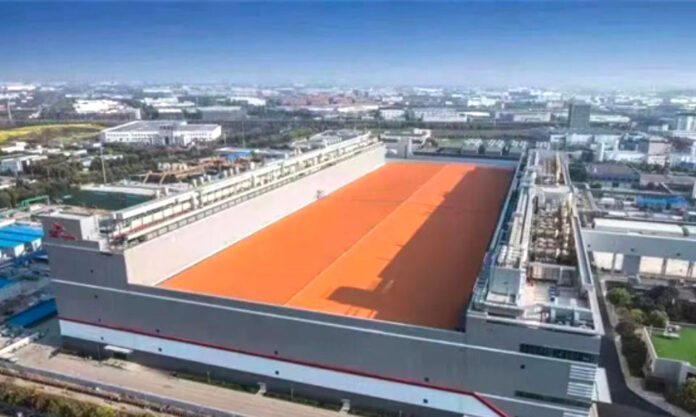China continues its Herculean efforts to wean itself off a dependency on other countries for the semiconductors employed in an ever-increasing array of scenarios. Here in Jiangsu, it’s Nanjing and Wuxi leading the mission direction, as illustrated by recent developments.
On 30 June, the second phase of the Huahong Wuxi Integrated Circuit R&D and Manufacturing Base officially commenced in Wuxi High-tech Zone. The whopping US$6.7-billion investment put in by Shanghai-based Huahong takes industrial cooperation between the Huahong Group and Wuxi to another level altogether.
As if proving the point, the Governor of Jiangsu Province, Xu Kunlin, delivered a video speech remotely and announced the beginnings of construction. Provincial Vice Governor, Hu Guangjie; and Chairman of the Huahong Group, Zhang Suxin, attended in person and laid the foundation stone for the project.
The colossal investment is sure to beef up Wuxi’s already-impressive numbers in the local integrated circuit (IC) industry. Last year, that amounted to ¥136.2 billion in Wuxi High-tech Zone, second only to Shanghai Zhangjiang, making it one of the few such industry clusters in China with a scale of more than ¥100 billion.
A little before that, Nanjing held that termed an IC supply and demand meeting on the morning of 20 June. It attracted nearly 80 enterprises to participate and talk about the new path forward, as well as new opportunities in the industrial chain’s supply and demand.
As Nanjing Daily reported at the time, an industry expert with Jiwei Consulting analysed the current development trend and said, “The development of the entire semiconductor industry still depends on downstream application demand. If the industry wants to develop healthily, it must respond to the needs of the market”.
The meeting underscored Nanjing’s considerable capacity for production in the semiconductor and related industries.
One need only look at the City’s three key high-tech areas; Jiangbei New Area, the Nanjing Economic Development Zone in Qixia District and the information and communication industry base in Jiangning District.
In Jiangbei, as well as Pukou District, the IC industrial bases therein have gathered a number of key projects and leading enterprises, such as Huatian Technology. Since 2016, the areas’ average annual IC growth rate has exceeded 40 percent.
Over in Nanjing’s northeast, Nanjing Economic Development Zone is where one will find big hitters that include BOE, Shanjin Optoelectronics and LG Display. They are joined by nearly 100 firms in the industrial chain, producing devices, panels, modules and applications, with strong local supporting capabilities.
Finally, to Jiangning District, where there are located nearly 100 key enterprises, such as ZTE and Ericsson Panda. Like Wuxi High-tech Zone, that’s another industry cluster with a scale of over ¥100 billion.
What a difference it’s all made to the local economy. In 2022, the output value of the Nanjing’s electronic-information manufacturing industry was ¥306.12 billion. That’s 18 percent of Nanjing’s entire GDP. And therein, the IC industry achieved a cumulative revenue of ¥56.803 billion, a year-on-year increase of 12.4 percent.
These developments in themselves won’t end China’s dependency on foreign chips. But as they join hands with other similar pushes forward elsewhere in China, they are with little doubt some fairly big strides in the right direction.









